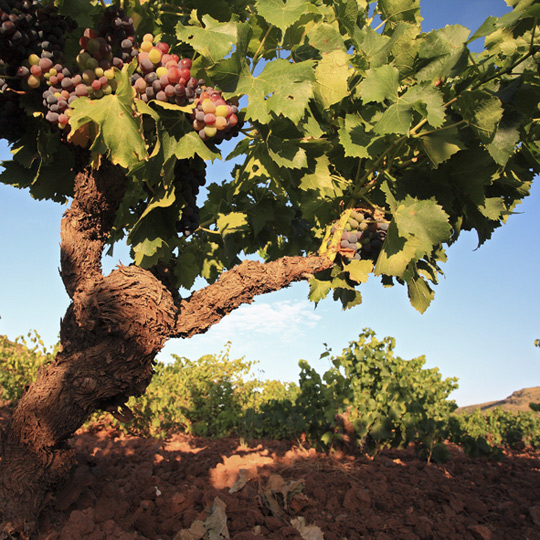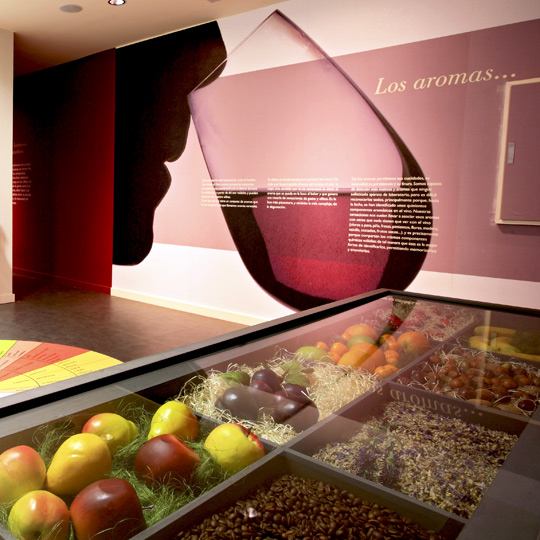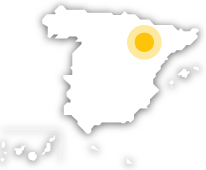What are the wines like?
This route has a limited production but is particularly prized for the structural and aromatic complexity of its wines. It is the result of almost eight centuries of experience, and of the 5,000 hectares of Garnacha, more than 2,000 are between 30 and 50 years old. It can be broken down into three regions. In the lower region, we find Garnacha vines pruned in goblet and on trellises and the wines are warm, powerful and very aromatic. The middle region is characterised by the highest concentration and density of vineyards, and its wines are very complex, intense, well-structured and full-bodied. Finally, the upper region produces delicate, subtle and elegant wines.

Grapevine
©
Ruta del Vino Garnacha - Campo de Borja
What I can find
The route offers the opportunity to visit the Cistercian Monastery of Veruela, the Wine Museum of the Borja Designation of Origin, Jewish quarters and Mudéjar towers, Romanesque hermitages, Arab irrigation channels and settlements from the Iron Age. Moreover, the Moncayo region is highly valued for its mushrooms, and many birds choose to live there. The area is full of attractive viewpoints to look out over the mountains, and you can enjoy activities such as hiking, mountain biking, horse riding, mountaineering, rock climbing and paragliding. Finally, the route offers comfortable accommodation, restaurants serving traditional food with modern touches and family-run wineries where you can sample Garnacha wines from Campo de Borja.

Wine Museum
©
Ruta del Vino Garnacha - Campo de Borja
How to get here
It is located some 60 kilometres from the city of Zaragoza and can be reached via the N-122 road linking Soria with Zaragoza or the AP-68 motorway, which connects with Zaragoza, Navarre, the Basque Country and La Rioja. Zaragoza is very easy to reach thanks to the AVE high-speed trains and the city's airport.A total of 20 municipalities have become part of this route and all of them are in the province of Zaragoza. They include Ainzón, Agón, Alberite de San Juan, Albeta, Ambel, Bisimbre, Borja, Bulbuente, Bureta, El Buste, Fréscano, Fuendejalón, Magallón, Maleján, Mallén, Novillas, Pozuelo de Aragón, Tabuenca, Talamantes and Vera de Moncayo.

Grapevine crops
©
Ruta del Vino Garnacha - Campo de Borja








